生物谷将于5月17日到18日在上海举办2018(第九届)细胞治疗国际研讨会,本次会议设置主论坛、细胞治疗学术专场、细胞治疗临床研究专场,细胞治疗产业论坛以及细胞治疗投融资对接。 会议将力求推动临床研究与细胞治疗的产业化进程, 邀请国内外顶尖的细胞治疗基础研究和临床专家、业内行家以及药物评审专家, 瞄准细胞治疗研究的最新研究动态和进展,针对细胞治疗的临床监管、治疗规范、细胞治疗安全性,新型CAR-T、CAR-NK、TCR-T疗法、实体瘤治疗、肿瘤免疫检查点抑制剂、间充质干细胞临床应用、细胞制备的自动化技术、基因编辑与细胞治疗、肿瘤免疫治疗的伴随诊断等热门议题进行讨论。
会议官网:http://meeting.bioon.com/2018cell-therapies
截止今天,嘉宾已确认了大半,今天小编为大家准备了8位嘉宾的演讲摘要,让各位老师一睹为快!如果觉得还不错,那就赶快报名吧!
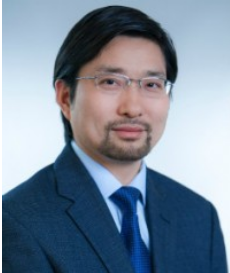
刘东方 Assistant Professor Houston Methodist Research Institute
演讲题目:快速有效预测CAR-T/NK疗效及副作用
演讲摘要:准确迅速地预测CAR T/NK细胞治疗的临床效能及其毒副作用是当今免疫细胞治疗中未解决的关键问题之一。目前,没有任何一个单一参数可以精准有效地预测CAR T/NK的临床疗效及其可能存在的毒副作用。随着免疫细胞治疗的高速发展,我们可以推测临床医生在选择不同药企相似的CAR T/NK细胞产品时将面临困境。 医疗市场缺乏高通量并排评估不同药企相似的CAR T/NK细胞产品对同一适应症病人的临床效能及其毒副作用。 该研究中,我们通过高通量,定量检测CAR T/NK免疫突触的质量来预测其临床效能和毒副作用。该技术,可能为免疫细胞的个体化,精准治疗引入新的临床检测指标及新的预测工具。
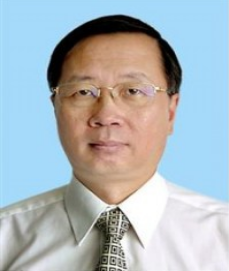
庞希宁 教授 中国医科大学基础医学院
演讲题目:人羊膜干细胞旁分泌作用促进皮肤组织再生机制的研究
演讲摘要:移植干细胞促进组织修复,除了其分化为所修复组织的细胞外,也许更重要的方式是干细胞的旁分泌作用改善受损组织的微环境,启动组织自身干细胞增殖和分化来修复损伤。已有研究表明干细胞可产生微泡,其内含有各种活性蛋白因子、还可以含有mRNA、miRNA甚至线粒体等细胞器。这将对损伤组织微环境产生非常大的影响。人羊膜干细胞包括羊膜间充质干细胞和羊膜上皮干细胞,人羊膜干细胞是最具活力的干细胞之一,具有很强的增殖能力和分化潜能,还具有很强的旁分泌能力。人羊膜干细胞的移植将会明显影响损伤组织的微环境,促进受损组织的修复。我们对人羊膜干细胞进行了mRNA和miRNA测序,分析了其可能产生的旁分泌活性蛋白质,并通过搜集含有其旁分泌产物的培养液,分别作用于皮肤角质形成细胞、皮肤成纤维细胞和血管内皮细胞,研究其旁分泌作用对它们的影响。发现其旁分泌产物能不同程度的促进这些细胞的增殖、迁移和分化,并研究了产生这些作用的主要分子,用这些分子在体外作用于皮肤角质形成细胞、皮肤成纤维细胞和血管内皮细胞,进行进一步的研究,同时通过动物实验在整体水平进行研究,深入探讨羊膜干细胞旁分泌作用促进皮肤再生的分子机理。期望以后能通过这些分子直接改善受损组织的微环境,促进组织的再生,达到治疗皮肤损伤的目的。

李光申 講座教授/副總院長 陽明大學臨床醫學研究所/台北市立聯合醫院
演讲题目: Research and application of mesenchymal stem cells: My 20-Year Journey
演讲摘要:Mesenchymal stem cells (MSCs) were first defined as a group of cells which were of self-renewal ability, were able to be culture-expanded for a prolonged period of time, and are able to differentiate into various lineages of connective progenies originated from embryonic mesoderm including bone, cartilage and adipose tissues. These cells were first isolated from bone marrow; subsequently, MSCs isolated from other sources such as liposuction fat, synovial tissues and trabecular bone have been reported by other investigators. Recently, it was reported that certain population of stem cells in human bone marrow, although low in frequency, were able to differentiate into cells and tissues originated from not only mesoderm, but also ectoderm.
In our laboratory, we have successfully isolated and culture-expanded MSCs from human bone marrow and umbilical cord blood using negative immuno-selection and limiting dilution methods. Surface phenotype of these cells was performed using flow cytometry and surface marker phenotype was characteristic of MSCs. These MSCs were able to differentiate into progenies originated from all three germ layers including osteoblasts, chondrocytes, adipocytes, neuroglial cells and hepatocytes. In vitro functionality of these differentiated progenies was also demonstrated. Particularly, MSC-differentiated hepatocytes have been shown to be able to secrete urea and uptake of low density lipoproteins is also noted in these MSC-differentiated hepatocytes.
There are various applications of MSCs in biomedical research both in vitro and in vivo. The in vitro model of MSC culture can serve as an excellent model to study the control of differentiation as well as the cell fate in each lineage. Novel genes and proteins that control differentiation can also be explored in this model. Besides, it can also be used for screening of new drugs and compounds. Most important of all, MSCs are indispensable in the study of cell therapy, tissue engineering and regenerative medicine.
Over the years, we have published more than one hundred peer-reviewed research articles to report our findings regarding the molecular mechanisms that govern the fate choice and differentiation, as well as the plasticity andapplications of MSCs. In particular, our efforts made to elucidate how MSCs sense and respond to biophysical and mechanical stimuli have substantially contributed to the understanding of mechanobiology in MSCs.
In summary, it is foreseeable that in the near future, MSCs will revolutionize the treatment of a variety of diseases. Therefore, more efforts should be made to further elucidate the basic science of MSCs to accelerate their clinical translation from bench to bedside.
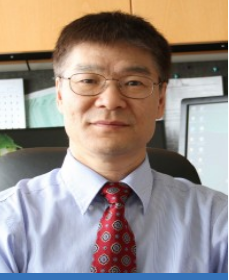
赵阳兵 教授/主任 美国宾夕法尼亚大学医学院Abramson 肿瘤中心T细胞工程实验室
演讲题目:Use CRISPR Gene Editing To Improve CAR-T/TCR-T Adoptive Immunotherapy For Cancers (CRISPR/CAS9技术用于促进肿瘤CAR-T/TCR-T细胞的过继性免疫治疗)
演讲摘要:CAR-T 治疗白血病和淋巴瘤已进入商业化进程。然而,不同于血液系统肿瘤,实体肿瘤的免疫治疗更为复杂,难度更高,并且需研发新的技术攻克。CAR-T /TCR-T 治疗实体肿瘤需多方面的突破, 尤其是靶的特异性, 克服肿瘤微环境的抑制及提高T细胞本身的质量。基因编辑技术,尤其是CRISPR/CAS9简单高效基因编辑技术的高速发展,对CAR-T/TCR-T攻克实体瘤提供了广泛的应用前景。本报告介绍了如何通过应用CRISPR/CAS9基因编辑技术对CART或TCR-T进行改造来制备通用型或功能增强型CAR-T或TCR-T并用于临床。我们发现, 敲除内源性TCR的TCR-T在体外实验或小鼠肿瘤模型中,可以达到和亲和力增强型TCR一样好的效果而不用担心脱靶副作用。同时,应用不同的小鼠肿瘤模型,通过应用CRISPR/CAS9基因编辑技术敲除免疫检查点分子PD1, CTLA4和Tim-3可明确增强CART或TCR-T疗效,尤其把PD1-CD28转换分子与Tim-3敲除同时应用。通过复杂的T细胞修饰,有望对肿瘤过继性免疫治疗有突破性进展。带PD1-CD28转换分子的Tim-3敲除的TCR-T细胞不但可以抵制肿瘤诱导的T细胞功能低下,在体外还可抵抗TGFb,Adenosine和抑制性T细胞(Treg)的抑制作用。
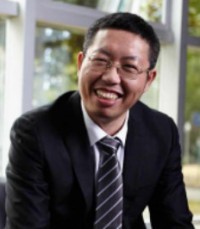
李宗海 研究员 上海市肿瘤研究所
演讲题目:针对实体瘤微环境的下一代CAR-T的研究与开发
演讲摘要:实体瘤恶劣微环境是严重影响CAR-T细胞免疫治疗存活及发挥功能的重要原因,因此如何由针对性第开发出一些高效能够克服这些微环境的技术,甚至把这些不利因素变成有利因素,无疑是下一代CAR-T开发的重点,我将介绍一下国内外特别是我们团队发展的一些CAR-T新技术。
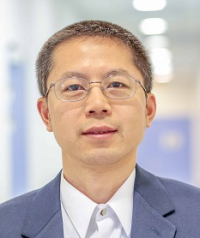
Li Zhou VP of Cell Engineering TxCell
TOPIC: Developing CAR Treg for Treating Autoimmune Disease
SUMMARY:The recent FDA approvals of the first two CAR T cell treatments for blood cancers (Kymriah™ and Yescarta™) mark the beginning of a new era. This is a fast progressing area. We can expect that there will be continuation of success on CAR-T in the blood cancers with reduced toxicity, reduced rate of relapse etc. There will be breakthrough on solid tumors by the CAR-T therapy, and off-the-shelf treatment will become a reality. In addition, the technology of genetically modified T cells will move beyond oncology. The Development of CAR-Treg cell therapy to target autoimmune diseases and induction of tolerance will likely be the next wave. At TxCell, we are developing CAR Treg for autoimmune disease and organ transplant rejection. HLA A2 appears to be an ideal target for organ transplant rejection, as HLAs are membrane-bound protein specifically expressed on the transplanted tissues, HLA A2 expression level is high, it can robustly induce CAR-Treg activity. It has high allelic frequency--about 25% transplanted organs are HLA A2 mismatched in North America. We are developing HLA A2 CAR-Treg therapy for organ transplant rejection and will start the first ever clinical trial using CAR-Treg cells. We have shown that HLA A2 CAR-Treg cells can prevent GVHD in a mouse model. Other proof of concept data will also be presented.
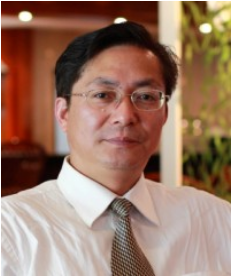
谭文松 教授/董事长 华东理工大学/生物反应器工程国家重点实验室/上海倍谙基生物科技有限公司
演讲题目:干细胞/免疫效应细胞规模化制备关键技术
演讲摘要:高效、经济、快速实现干细胞/免疫效应细胞的体外扩增,建立基于生物反应器平台的规模化自动化治疗级细胞产品制备工艺过程,获得高品质的细胞产品是细胞治疗产业发展的核心技术之一。本团队以造血干细胞、间充质干细胞以及免疫效应细胞为对象,通过研究体外培养过程中细胞的物质和能量代谢特性,以及深入解析体外培养过程中细胞扩增、营养物质消耗、代谢产物生成的动力学特性以及主要代谢途径关键酶活性的动态变化规律,设计开发能够促进细胞增殖、调控细胞功能的无血清培养基组成,并进一步采用蛋白固载、包埋缓释等技术,优化细胞因子的作用方式,实现效应细胞的高效扩增。最后,结合生物反应器的优化设计和操作,建立了规模化的干细胞/免疫效应细胞高效扩增技术,为解决细胞治疗面临的细胞数量不足和质量难以保证等瓶颈问题、加快其临床应用和产业化步伐奠定了基础。
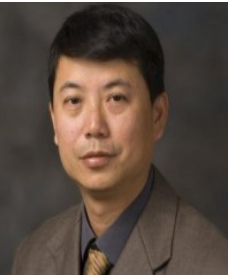
杨林 教授 苏州大学唐仲英血液学研究中心/博生吉医药科技(苏州)有限公司董事长兼首席科学官
演讲题目:全自动、全封闭CAR-T细胞的制备工艺探讨
演讲摘要:CAR-T细胞治疗在血液恶性肿瘤的临床试验中表现出了巨大的潜力。但是T细胞的体外基因修饰涉及到诸多步骤,尤其是在新药监管模式的要求下,要在GMP条件下制备出合格的CAR-T细胞、而且这样的制备工艺还必须能满足未来产业化的要求,就成为了一个CAR-T细胞发展中必须克服的障碍。
国家食品药品监督管理总局药品审评中心近日发布了关于《细胞制品研究与评价技术指导原则》(试行版),不仅正式明确了CAR-T细胞按照药品评审原则监管,而且在制备工艺上明确指出了“全封闭、全自动”的发展要求。杨林博士将针对CAR-T细胞的工业制备,结合自身的发展经验,进行系统阐述和比较,为CAR-T细胞产业的工业化发展,指明方向。

尊敬的 先生/女士
您已注册成功,注册信息及注意事项已发到联系人及参会人邮箱,请注意查收。如未收到,请联系大会联系人。